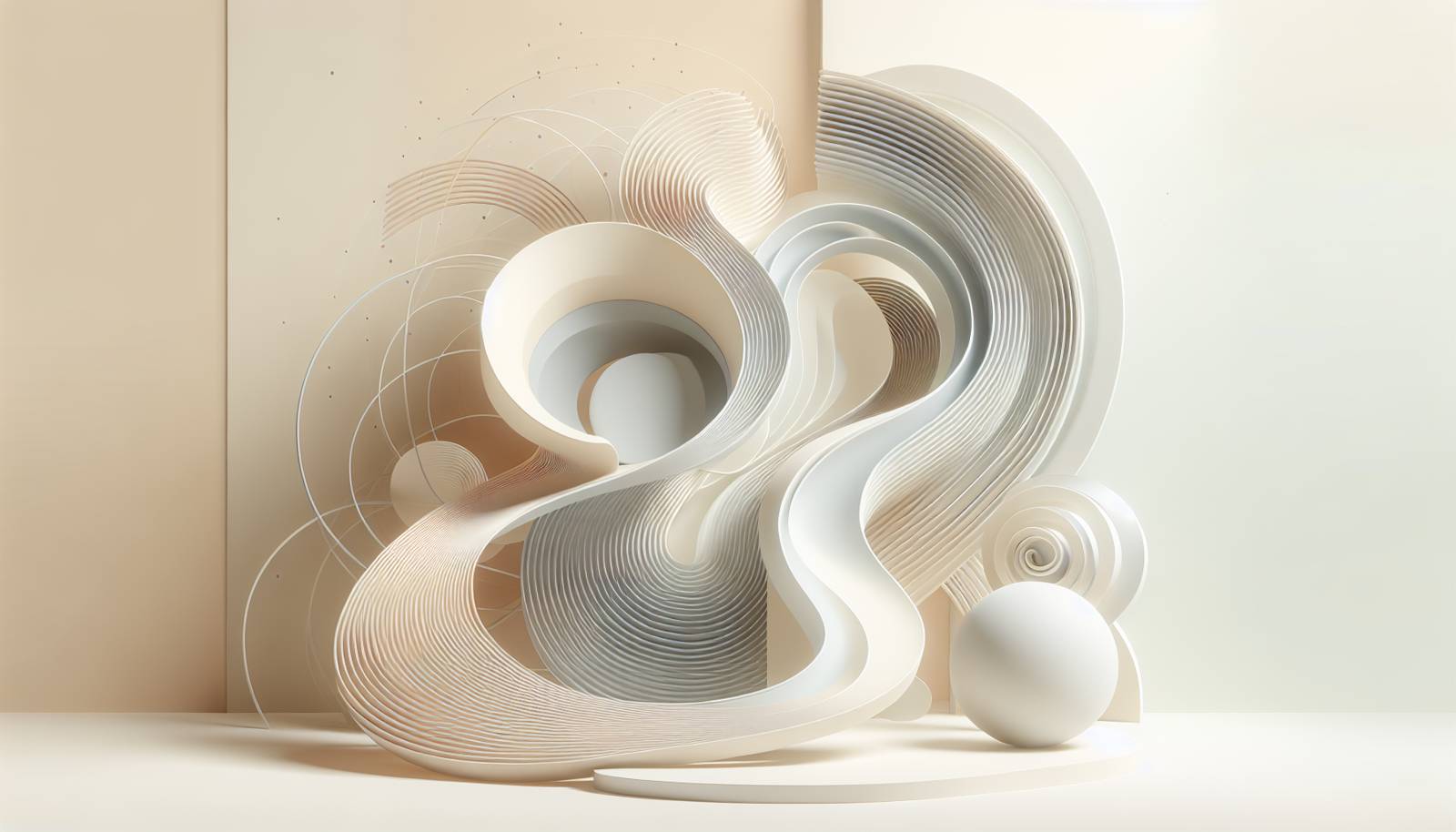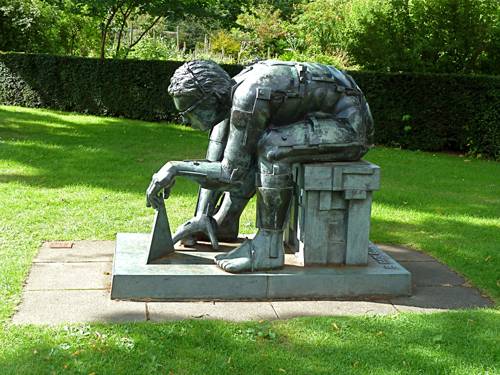
FAQ About The Role of Modern Sculpture in Public Spaces

What defines modern sculpture in public spaces?
Modern sculpture in public spaces is characterized by its innovative use of materials, contemporary styles, and often non-traditional forms that engage viewers in new ways. These sculptures often emphasize abstraction, minimalism, and sometimes include multimedia elements, interacting dynamically with the space and the public.

How do modern sculptures enhance public spaces?
Modern sculptures can enhance public spaces by offering aesthetic beauty, serving as landmarks, promoting cultural and historical awareness, and providing a platform for public engagement and community interaction. They often serve as focal points that encourage people to gather, reflect, and discuss.

Why are modern sculptures important in urban design?
Modern sculptures play a pivotal role in urban design by contributing to the identity and character of a city. They can transform mundane areas into vibrant environments, spark public interest, and enhance the appeal of urban settings. Additionally, they offer artists a canvas to express societal issues and themes.

In what ways do modern sculptures contribute to cultural dialogue?
Modern sculptures contribute to cultural dialogue by reflecting contemporary social issues, promoting diversity, and often engaging with themes like identity and globalization. They provide a physical space for ideas to be exchanged and for communities to reflect on common or contested narratives.

Can modern sculptures influence community identity?
Yes, modern sculptures can significantly influence community identity by reflecting local values, history, and aspirations. They often become symbols of cultural pride and can unite communities by embodying shared identities and experiences. Sculptures can also serve as memorials, preserving memories that are vital to a community's history.

How are modern sculptures in public spaces designed to be interactive?
Many modern sculptures are designed to be interactive by encouraging physical engagement, using sensory elements like sound and light, or through digital technology such as augmented reality. Their placement and form often invite the public to touch, walk around, or incorporate the sculpture into their daily routines.

What materials are commonly used in modern public sculptures?
Modern public sculptures utilize a range of materials, including traditional ones like stone and metal, alongside modern materials such as plastics, glass, recycled materials, and digital components. Artists often select materials that align with the sculpture’s message or the environment where it is placed.

Who typically commissions modern sculptures for public spaces?
Modern sculptures for public spaces are commonly commissioned by government bodies, private corporations, urban planners, community groups, and art organizations. The commissions often aim to enhance urban aesthetics, strengthen community ties, or make cultural statements.

How do public spaces benefit from the temporary installation of modern sculptures?
Temporary installations of modern sculptures can invigorate public spaces by bringing fresh artistic experiences and perspectives. They allow for a dynamic cultural environment where different works can engage diverse audiences, and they offer flexibility to experiment with new artistic ideas and themes.

Do modern sculptures in public spaces often face criticism? Why?
Yes, modern sculptures in public spaces can face criticism for various reasons, including their aesthetic appeal, cost, political or cultural messages, and location. These debates often arise due to differing public tastes, interpretation of the works' meanings, or financial priorities of the commissioning bodies.

What role do modern sculptures play in education and public awareness?
Modern sculptures play an educational role by prompting curiosity and inquiry. They facilitate public awareness about different cultures, historical events, or current social issues. Educational programs and guided tours around these sculptures further enhance their educational value.

How do modern sculptures integrate with their surrounding environment?
Modern sculptures integrate with their surroundings through thoughtful design, considering scale, color, form, and context. Artists and planners often work to ensure that the sculptures either complement or intentionally contrast with the environment, contributing to the overall aesthetic and experiential quality of the space.

Are there any famous modern sculptures in public spaces?
Yes, there are many famous modern sculptures in public spaces worldwide, such as 'The Bean' (Cloud Gate) in Chicago's Millennium Park by Anish Kapoor, 'Spiral Jetty' by Robert Smithson on Utah's Great Salt Lake, and 'Maman' by Louise Bourgeois in Bilbao, Spain. These works have become iconic symbols of their respective locations.

What is the economic impact of modern sculptures in public spaces?
Modern sculptures can have a positive economic impact on public spaces by attracting tourists, stimulating local businesses, and potentially increasing property values. They contribute to the cultural economy by engaging a broad range of audiences, from enthusiasts to casual onlookers, thereby supporting local and regional economic development.

How do modern sculptures promote environmental awareness?
Many modern sculptures promote environmental awareness by using sustainable or recycled materials, engaging with themes of nature and conservation, or dynamically interacting with natural elements such as wind and sunlight. These artworks can stimulate reflection on human and environmental interconnections and sustainability.

What challenges do artists face when creating modern sculptures for public spaces?
Artists creating modern sculptures for public spaces face challenges such as balancing artistic vision with community needs, securing funding, meeting safety and durability standards, and navigating public approval processes. They also must consider how the piece will withstand environmental conditions over time.

How do modern sculptures affect social well-being in communities?
Modern sculptures can enhance social well-being by providing spaces for community interaction, fostering a sense of belonging, and enhancing the beauty of otherwise mundane environments. They often serve as a catalyst for events and gatherings that strengthen community ties.

What role do modern sculptures play in urban regeneration?
In urban regeneration, modern sculptures can transform neglected or underused spaces into vibrant areas for social and cultural engagement. They can act as symbols of renewal and identity, attracting visitors and fostering local pride, which can lead to further investment and improvements in the area.

Are modern sculptures in public spaces accessible for everyone?
While modern sculptures are designed to be accessible to the public, there may be barriers related to location, physical accessibility, or the complexity of the works themselves. Efforts are continuously made to ensure inclusivity, such as designing spaces that accommodate individuals with disabilities and providing interpretive aids.

How is funding typically secured for modern sculptures in public spaces?
Funding for modern sculptures in public spaces often comes from a mix of sources, including government grants, private donations, corporate sponsorships, and arts organizations. Some projects utilize crowdfunding or public-private partnerships to gather the necessary financial resources.
